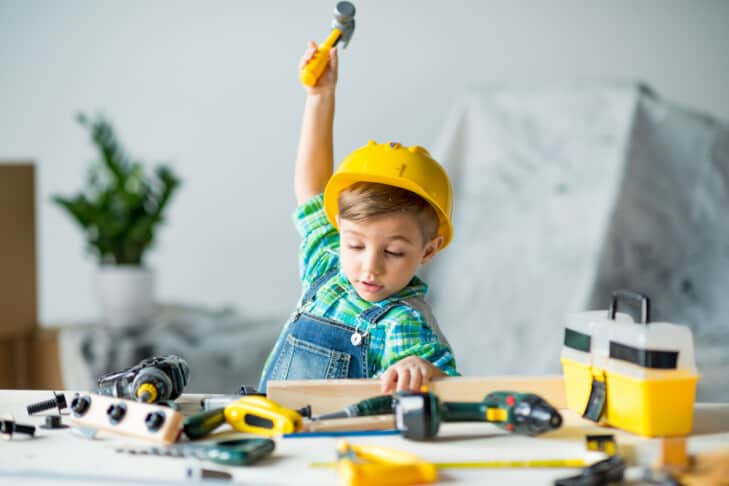We often hear teachers speaking to young children about sharing and taking turns, but what does it look like to teach the essential life skill of collaboration?
Collaboration is a key component to the Reggio Emilia-inspired philosophy of the Early Learning Center (ELC) at Temple Shir Tikva in Wayland, Massachusetts—collaboration between children, between children and teachers, between home and school. Even the ways in which the children interact with materials is a collaboration. Roberta Pucci, a Reggio Emilia educator, says: “Every material has its own qualities and personality. It is a kind of natural grammar. This grammar is the range of possible transformations that the material can undergo. You can have a dialogue with the material and the material will reveal itself to you.”
This collaboration began in our 4-year-old room, where the teachers observed that building was a common thread that ran through the class. The teachers offered a variety of materials and made note of the types of structures the children were making. From there, the children and teachers co-constructed a curriculum about building and architecture. They looked at photos and illustrations of many types of buildings, and created skyscrapers that now line the walls of their classroom from floor to ceiling. Supporting the ongoing focus, the next logical step was to actually construct a building. During morning meeting, teachers and students brainstormed a list of ideas they wanted to incorporate into the structure: the number of doors and windows, a rainbow rock path, and a chalk wall.
As the director, I meet weekly with the classroom teachers, modeling and facilitating collaboration for our professionals. They shared the idea for this project and I wondered if this could expand as a schoolwide collaboration. We asked the other teachers in our five classrooms of learners ranging in age from 18 months to five years of age, “What would you want to see included in our dream structure?” Plans for a sound wall, a magnet wall, a mud kitchen and a garden soon emerged. We purchased materials and excitement for the project was palpable throughout the school.
A basic tenet of Reggio is that children are valued as competent and capable. We supported our young learners as they took up real tools- hammers, sandpaper, nails, and got to work securing boards into place. There was a job for everybody—every ELC teacher, administrator, and student, even our youngest learners, not yet 2 years old, contributed to this project by weatherproofing boards, beading a curtain, or painting a rock to add to the rainbow rock path.
I believe teachers who are engaged, flexible, and invested in their children’s learning are the best teachers. By actively engaging in the process of learning with the children, and by providing them the opportunity to speak, not only did they hear and honor the children’s ideas, they facilitated a project that brought the ideas to life and empowered them to make decisions as part of a community of learners. In this way, the children shaped their own learning. The Reggio community often speaks about children “co-constructing knowledge” alongside their teachers. At the ELC, children are physically building with wood, hammer and nails; they are building their brains and expanding their knowledge base; and they are collecting the social emotional tools necessary for collaboration.
Extending this collaboration further included the partnership with the synagogue. The ELC enjoys a beautiful relationship with our senior rabbi and cantor. They are a beloved presence during our weekly Shabbat services, and any time they visit the ELC. Upon completion of the building, it still felt as though something was missing. One of our teachers had been given a beautiful mezuzah, and we invited our senior rabbi to offer a blessing as we hung it on the entrance. Each teacher and administrator took a turn in hammering in the mezuzah, as the children repeated the words of the blessing.
One of our favorite teachings at Temple Shir Tikva comes from the Talmud and is an interpretation and play on words in Berakhot 54a: “And all your children shall be taught of Adonai, and great shall be the peace of your children” (Isaiah 54:13). The sages go on to instruct: Do not read [the word, banayikh] as your children, but as your builders [bonayikh].
Our children, our learners, are those who will build peace for their generation. In this instance, we found that honoring their ideas, and trusting them to collaborate brought the entire school and synagogue together in a meaningful project that will forever be a tangible realization of our school and synagogue values.
Originally published in Early Childhood Educators of Reform Judaism on Oct. 19, 2022.
This post has been contributed by a third party. The opinions, facts and any media content are presented solely by the author, and JewishBoston assumes no responsibility for them. Want to add your voice to the conversation? Publish your own post here. MORE


